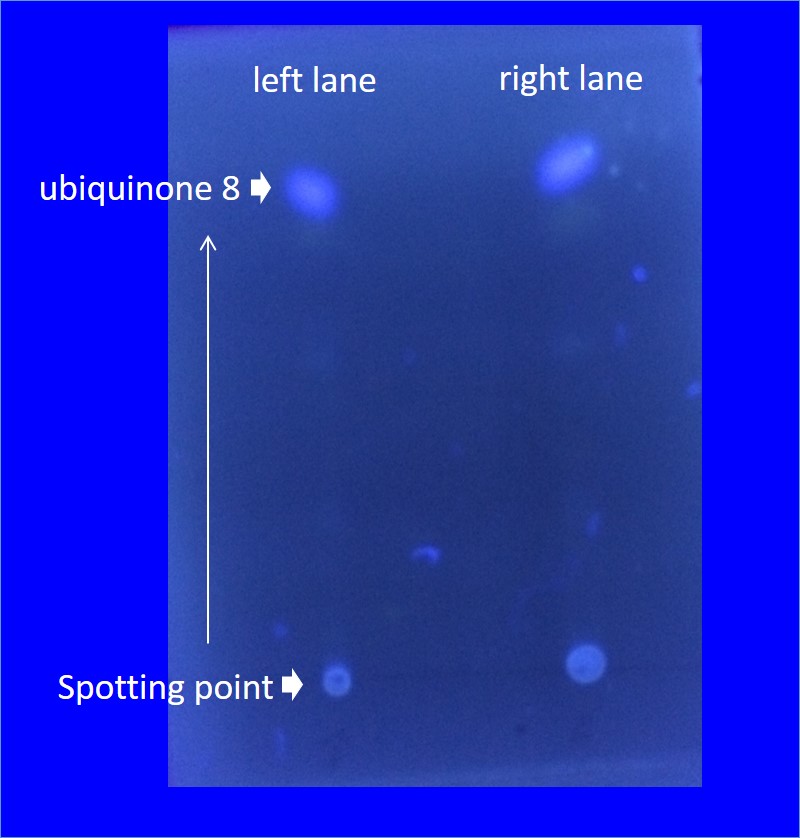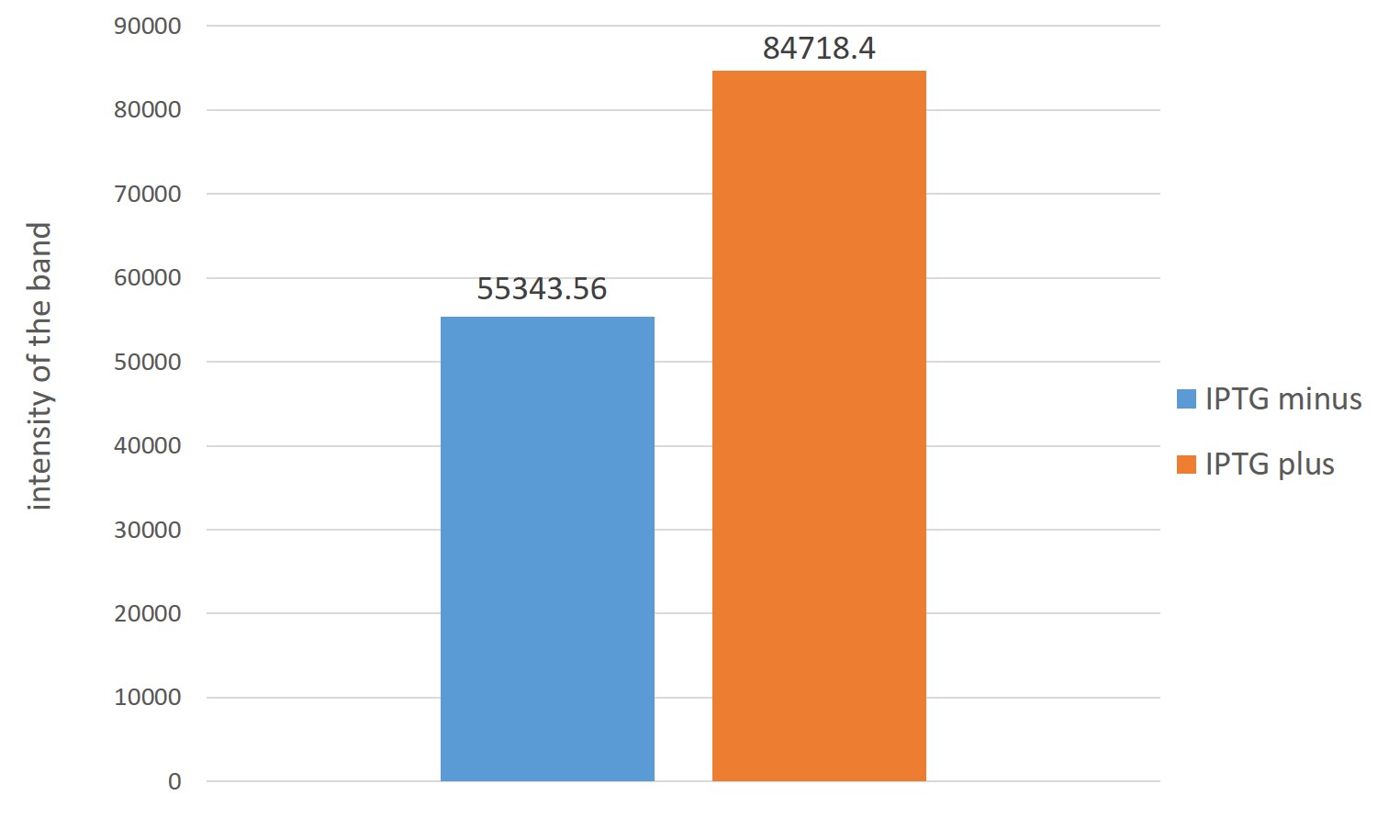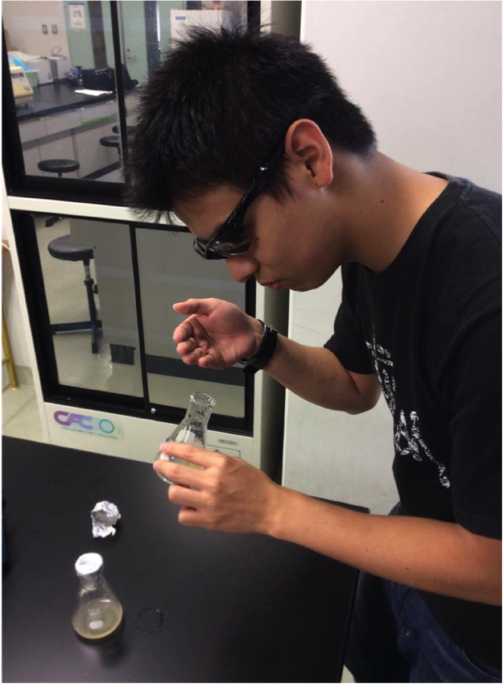Team:Nagahama/Medal Parts
Contents
- 1 BioBrick Parts to achieve each medal requirement
- 1.1 Bronze
- 1.2 Silver
- 1.2.1 Terpene precursor mass-production device([http://parts.igem.org/wiki/index.php?title=Part:BBa_K1653024 BBa_K1653024])
- 1.2.2 Farnesol production device([http://parts.igem.org/wiki/index.php?title=Part:BBa_K1653025 BBa_K1653025])
- 1.2.3 Geraniol production device([http://parts.igem.org/wiki/index.php?title=Part:BBa_K1653027 BBa_K1653027])
- 1.3 Gold
BioBrick Parts to achieve each medal requirement
Bronze
We created 30 new BioBricks[1] for bronze medal criterion. And have documented and submitted them to igem Registry.
We introduce ispA ([http://parts.igem.org/Part:BBa_K1653003 BBa_K1653003]) of them. This biobrick is Key BioBrics in "Flavorator" project.
ispA encodes Farnesyl diphosphate synthase. Farnesyl diphosphate synthase can utilize both dimethylallyl and geranyl diphosphates as substrates, generating geranyl and farnesyl diphosphate, respectively. Therefore the enzyme can catalyze two sequential reactions in the polyisoprenoid biosynthetic pathway.
Silver
We created 3 new BioBrick devices for silver medal criterion.
Terpene precursor mass-production device([http://parts.igem.org/wiki/index.php?title=Part:BBa_K1653024 BBa_K1653024])
To realize "Flovorator" we need to make E. coli produce a large amount of terpene precursor. Surprisingly, We have succeeded in its mass-production by terpene precusor mass-production device. Our new biobrick device worked as expected. Because we validate this fact by ubiquinone thin-layer chromatography (TLC) analysis experimentally. We have documented and submitted this new Biobrick device([http://parts.igem.org/wiki/index.php?title=Part:BBa_K1653024 BBa_K1653024]) to iGEM Registry .

We want to make the E. coli produces farnesol and geraniol which are one of the terpenes. To produce great quantity of terpenes they need many terpene precursor. E. coli produces a small amount of the terpene precursor in MEP pathway. In MEP pathway, there are four enzymes (ispD, ispF, idi, dxs) which are speed limiting enzyme for terpenes precursors produce in E. coli. In order to create a high-yield strains producing IPP and DMAPP, we exogenously engineer to superimpose these genes into E. coli to create strains overproducing IPP and DMAPP in a MEP pathway. To confirm increased production of terpene precursors by Terpene precursor mass-production device. We put attention on ubiquinone. Ubiquinone 8 is made from Farnesyl diphosphate (FPP) which is one of the terpene precursors. quinone is one of the electron carrier present in the cell membrane of prokaryotes. And also they glow when exposed to UV rays. In the measurement of production of quinone it was measured by thin-layer chromatography. (TLC silica gel)
Result:
(fig1) The left lane is analysis of ubiquinone 8 by thin-layer chromatography. The right lane is JM109 /Terpene precursor mass-production device with IPTG Left lane is JM109/Terpene precursor mass-production device IPTG minus . Both it was 2μl spot.
The right of the figure,Estimation of ubiquinone-8 content instead Each intensity of spots indicating the content of ubiquinone-8
From two figures, those which are overexpressed in reintroduced to E. coli four genes, it is better to have overexpressed were many production of ubiquinone 8 as compared with those that do not overexpress
Discussion:
From this result, the amount of ubiquinone 8 of the final material by the increased amount of terpene precursors is increased by re-introducing the four genes are over-expressed in E. coli.
Therefore, it considered could strengthen the MEP pathway.
Farnesol production device([http://parts.igem.org/wiki/index.php?title=Part:BBa_K1653025 BBa_K1653025])
To realize "Flovorator" we need to make E. coli produce Farnesol. Surprisingly, We have succeeded in farnesol production by Farnesol production device.
Our new biobrick device "Farnesol production device" worked as expected. Because we validate this fact by GC-MS analysis experimentally. We have documented and submitted this new Biobrick device([http://parts.igem.org/wiki/index.php?title=Part:BBa_K1653025 BBa_K1653025]) to iGEM Registry .

Farnesol is probably generated through FPP hydrolysis by endogenous phosphatases, which are induced by an increased intracellular FPP level. Analogously, we hypothesized that E. coli could produce farnesol under cellular conditions of an increased intracellular FPP level through metabolic engineering. A MEP pathway has been shown to synthesize IPP and DMAPP efficiently in E. coli. Because of its high hydrophobicity and low volatility, decane was chosen to extract and solubilize farnesol from culture broth. The decane overlay in the two-phase culture did not affect growth, and farnesol could be solubilized in the decane phase with negligible volatile loss. We adopt 1 mL of decane overlaid to 5 mL of culture broth. Two-phase culture of E. coli JM109 (BBa_K1653025) was carried out in 2YT medium containing 1% glycerol at 29°C for 48 h. The decane phase of the two-phase culture was collected to analyze the farnesol content by GC-MS. In the GC-MS analysis (Fig. 3 A-G), there was a main peak at 8.5 min in the collected decane phase sample, which corresponded to the reference solution of the standard farnesol compound dissolved in decane. Mass spectrometry confirmed that the peak at 8.5 min was farnesol (Fig. 3-A). However, the peak was not observed in two-phase culture without introducing BBa_K165025. The formation of farnesol from FPP was further confirmed by blocking FPP synthesis. In the GC-MS, the farnesol peak was observed in E. coli JM109 (BBa_K1653025) culture, whereas no peak was observed with transformed E. coli JM109. It was found that farnesol need not only ispA(BBa_K1653018) but also MEP(BBa_K1653024) in E. coli. We submit new part(BBa_K1653025) as producing farnesol.
Gas Chromatography/Mass(GC/MS)

Geraniol production device([http://parts.igem.org/wiki/index.php?title=Part:BBa_K1653027 BBa_K1653027])
To realize "Flovorator" we need to make E. coli produce Farnesol. Surprisingly, We may have succeeded in farnesol production by geraniol production device.
Our new biobrick device "Geraniol production device" worked as expected. Because we validate this fact by questionnaire survey analysis experimentally. We have documented and submitted this new Biobrick device([http://parts.igem.org/wiki/index.php?title=Part:BBa_K1653027 BBa_K1653027]) to iGEM Registry .
![]()
Geraniol is generated through GPP hydrolysis by geraniol synthase. A MEP pathway has been shown to synthesize IPP and DMAPP efficiently in E. coli. E. coli engineered with Geraniol production device (BBa_K1653027) showed different smell as compared with the counterpart control (pSB1C3) and the original strain JM109. This result was obtained by the double blind test following the questionnaire survey. And then we tried to detect that the geraniol generated by engineered E. coli by GC and GC-MS. Geraniol was not detected. These results may suggest that E. coli with Geraniol production device produces less than the lowest limit detected by GC and GC-MS.
-
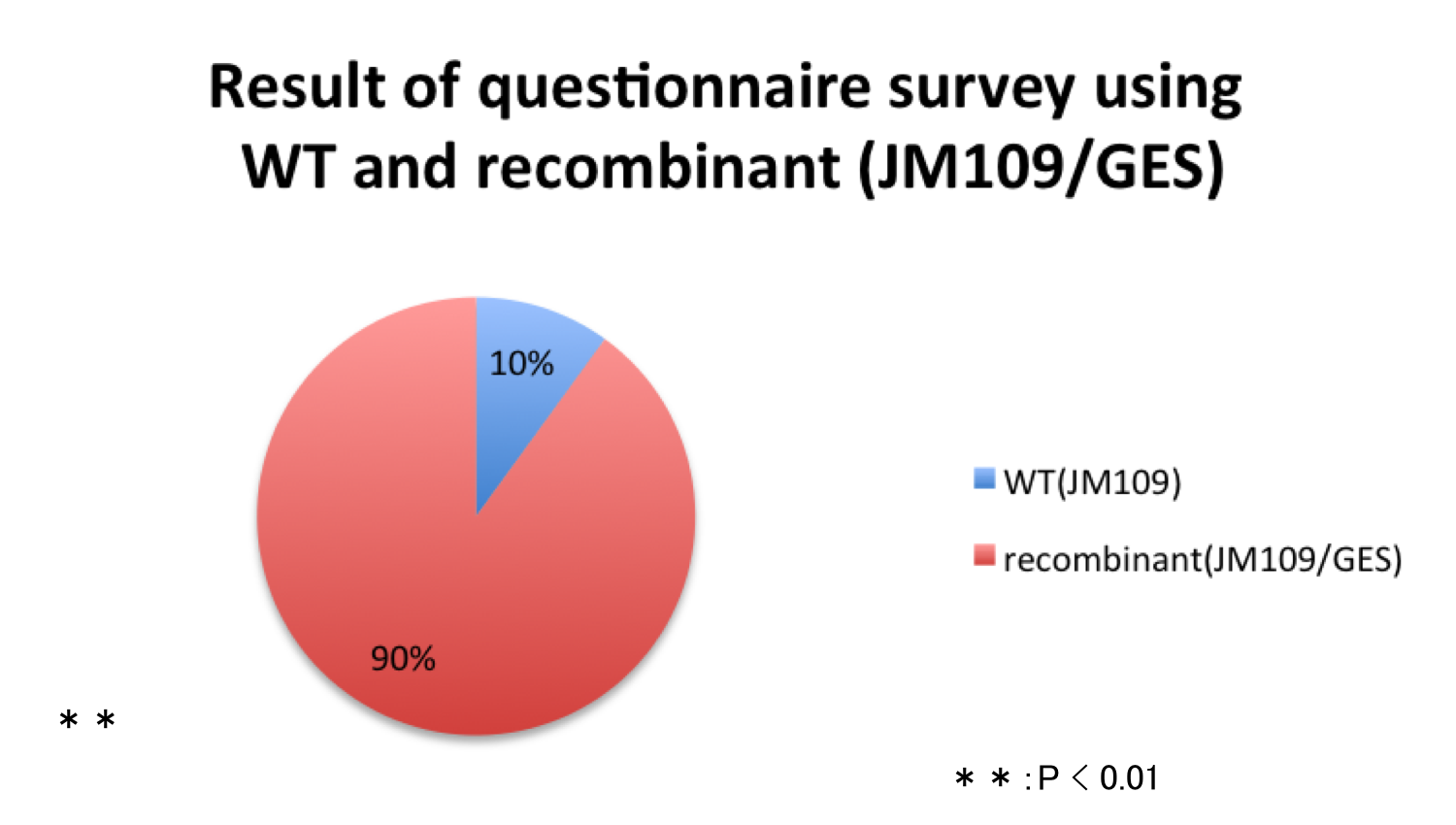 Fig.10 Result of questionnaire survey using WT and recombinant (JM109/GES). Out of 20 persons, two persons (10%) answered the medium A (WT) smelled stronger than the medium B (recombinant (JM109/GES)) and eighteen persons (90%) answered the medium B smelled stronger than the medium A. If we assume that both media smell equally, the probability that the medium A is selected in the questionnaire must be 0.5. From this assumption, p-value of this result was calculated using binomial test. Because the p-value was much smaller than the 5% significance level (0.0004025), the smell of recombinant (JM109/GES) is stronger than that of WT significantly. This result indicate that the recombinant (JM109/GES) synthesize geraniol.
Fig.10 Result of questionnaire survey using WT and recombinant (JM109/GES). Out of 20 persons, two persons (10%) answered the medium A (WT) smelled stronger than the medium B (recombinant (JM109/GES)) and eighteen persons (90%) answered the medium B smelled stronger than the medium A. If we assume that both media smell equally, the probability that the medium A is selected in the questionnaire must be 0.5. From this assumption, p-value of this result was calculated using binomial test. Because the p-value was much smaller than the 5% significance level (0.0004025), the smell of recombinant (JM109/GES) is stronger than that of WT significantly. This result indicate that the recombinant (JM109/GES) synthesize geraniol. -
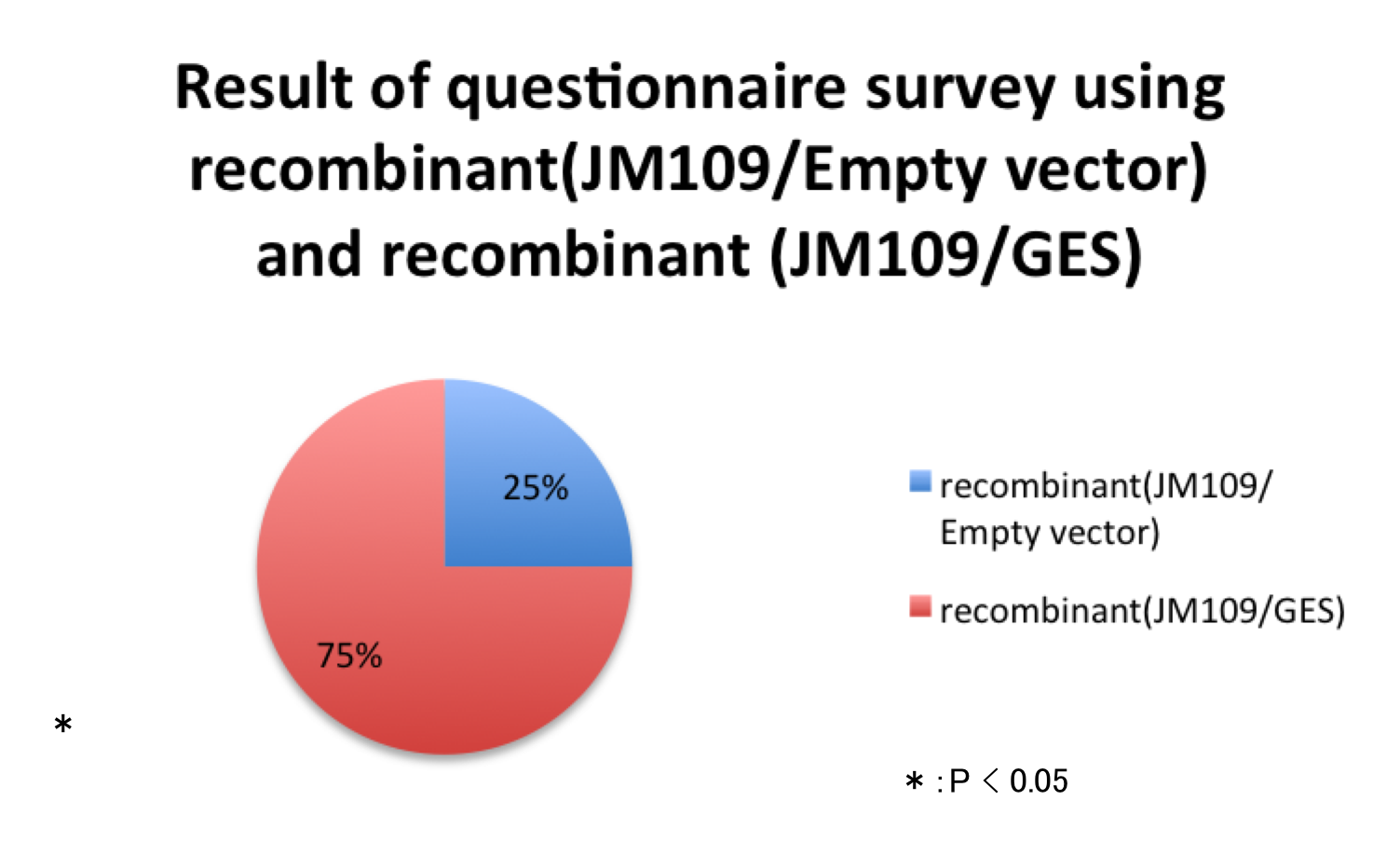 Fig.11 Result of questionnaire survey using recombinant(JM109/Empty vector) and recombinant (JM109/GES). Out of 20 persons, five persons (25%) answered the medium A (recombinant (JM109/GES)) smelled stronger than the medium B (recombinant (JM109/GES)) and fifteen persons (75%) answered the medium B smelled stronger than the medium A. If we assume that both media smell equally, the probability that the medium A is selected in the questionnaire must be 0.5. From this assumption, p-value of this result was calculated using binomial test. Because the p-value was much smaller than the 5% significance level (0.0413900), the smell of recombinant (JM109/GES) is stronger than that of recombinant(JM109/Empty vector) significantly. This result indicate that the recombinant (JM109/GES) synthesize geraniol.
Fig.11 Result of questionnaire survey using recombinant(JM109/Empty vector) and recombinant (JM109/GES). Out of 20 persons, five persons (25%) answered the medium A (recombinant (JM109/GES)) smelled stronger than the medium B (recombinant (JM109/GES)) and fifteen persons (75%) answered the medium B smelled stronger than the medium A. If we assume that both media smell equally, the probability that the medium A is selected in the questionnaire must be 0.5. From this assumption, p-value of this result was calculated using binomial test. Because the p-value was much smaller than the 5% significance level (0.0413900), the smell of recombinant (JM109/GES) is stronger than that of recombinant(JM109/Empty vector) significantly. This result indicate that the recombinant (JM109/GES) synthesize geraniol.
Gold
marA :The activator of AcrAB-TolC multidrug efflux pump exports some terpenes([http://parts.igem.org/wiki/index.php?title=Part:BBa_K1653006 BBa_K1653006])
We improved the characterization of a previously existing BioBrick Part [http://parts.igem.org/Part:BBa_K1230000 BBa_K1230000] and submitted this improved BioBrick marA gene as [http://parts.igem.org/wiki/index.php?title=Part:BBa_K1653006 BBa_K1653006] to iGEM Registry.
In existing part's information of marA, it gives E. coli resistance against kanamycin only. In this year, we confirmed that overexpressing of marA gives E. coli resistance against geraniol as one of the terpene and decrease its intracellular concentration. This information is very beneficial for other iGEMers to production of toxic organic substances that are produced using bacteria.
We introduce an activator gene of AcrAB-TolC efflux pump (MarA) to release the geraniol from the cells and increase the content in the media that shows increase these flavors in the "Flavolator". In our study, we confirmed that overexpressing of marA gives host E. coli high resistance against geraniol and reduce intracellular geraniol concentration.
Efficient export of geraniol from E. coli to the media
 [http://parts.igem.org/wiki/index.php?title=Part:BBa_K1653020 BBa_K1653020]
[http://parts.igem.org/wiki/index.php?title=Part:BBa_K1653020 BBa_K1653020]
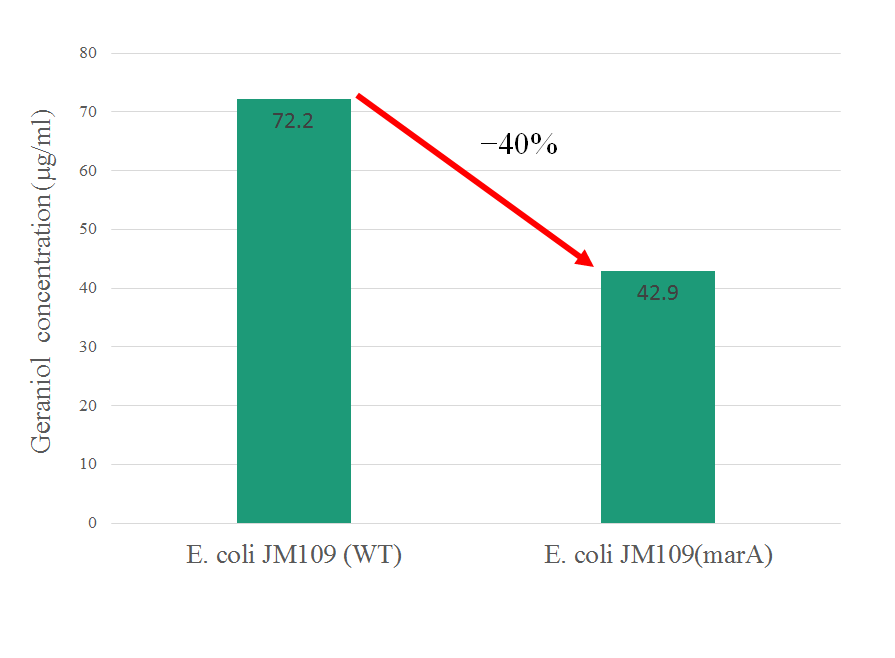
In this figure, intracellular content of geraniol was less in the strain E. coli JM109 (marA) than the strain E. coli JM109 (WT). The concentrations of intracellular geraniol from E. coli JM109 (marA) was 42.9 μg/ml, which was 40% lower than that from of E. coli JM109 (WT), 72.2 μg/ml. This figure is suggesting that internalized geraniol could be more efficiently exported through AcrAB-TolC efflux pump following the presumed activation of this gene by introducing the activator marA gene.
Enhancement of geraniol resistance
 [http://parts.igem.org/wiki/index.php?title=Part:BBa_K1653020 BBa_K1653020]
[http://parts.igem.org/wiki/index.php?title=Part:BBa_K1653020 BBa_K1653020]

E. coli JM109 and E. coli JM109 (marA) were spotted on LBGMg agar plates in serial ten-fold dilutions (10⁻¹~10⁻⁵), overlaid with 1.0 % (V/V) geraniol hexane solution (geraniol solution), and incubated at 30°C for 24 h. This figure shows that E. coli JM109 (marA) cells that overexpress the marA product is more survived on 1.0 % geraniol solution overlay plates than the counterpart control E. coli JM109 wild type cells.
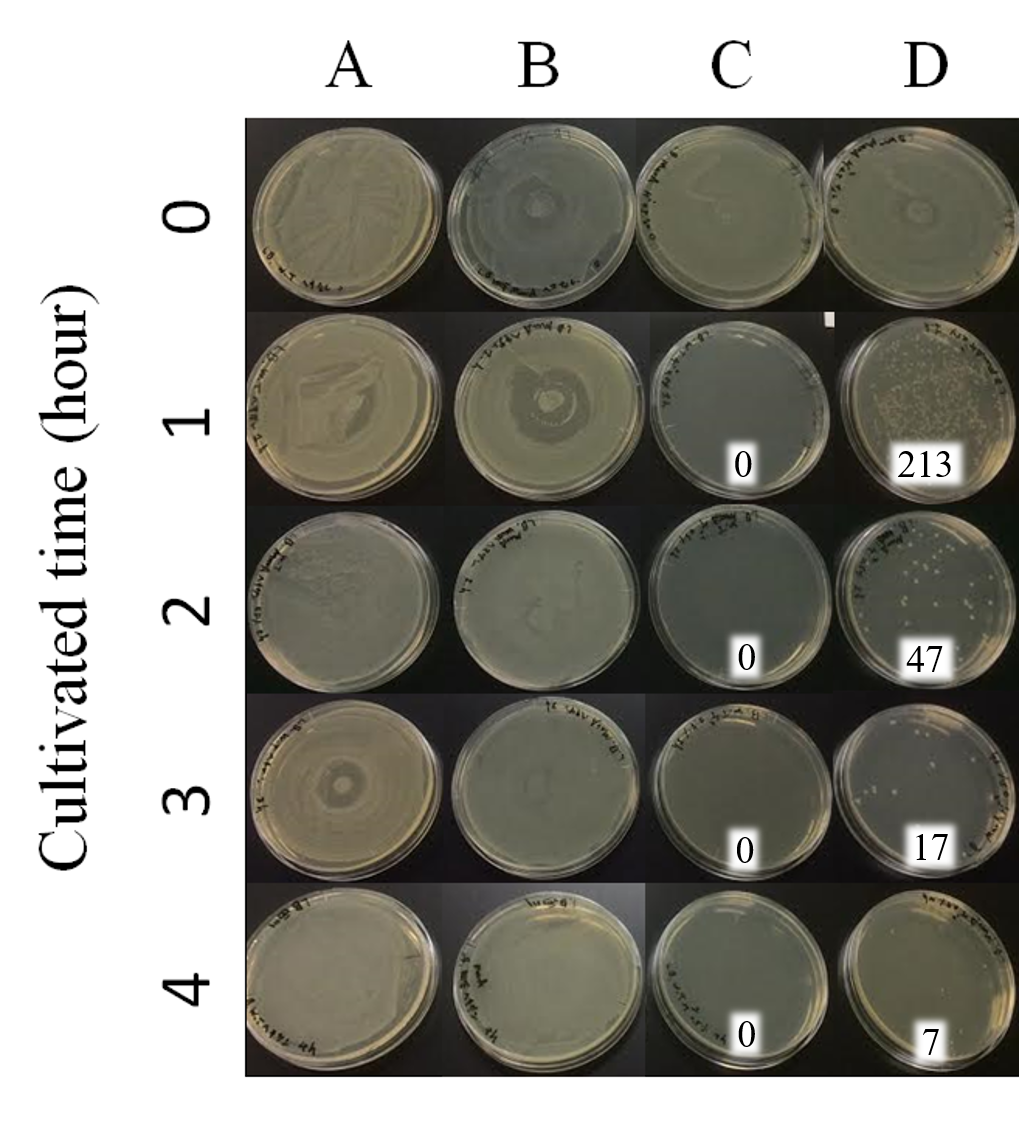
Time interval for treatment was set every 1 hour from 1 hour to 4 hours. A: E. coli JM109 (WT) + hexane; B: E. coli JM109 (marA) + hexane; C: E. coli JM109 (WT) + 0.5 % geraniol solution; D: E. coli JM109 (marA) + 0.5 % geraniol solution. As shown in Figs. 2 A and B, treatment with hexane of E. coli JM109 (WT) and of E. coli JM109 (marA) showed similar colony numbers during these treatment intervals to those of time zero. This result suggests that hexane at this concentration and duration of time for 4hours did not affect both cell growth. In contrast, treatment with geraniol of E. coli JM109 (WT) and of E. coli JM109 (marA) showed toxicities to both strains (Figs. 3 B, C and D). If we watch the colony numbers carefully, E. coli JM109 (marA) had more than E. coli JM109 (WT) during these treatment intervals ((Figs. 3 C and D). These results demonstrate that toxicity of the geraniol was less to the strain E. coli JM109 (marA) than the strain E. coli JM109 (WT).

